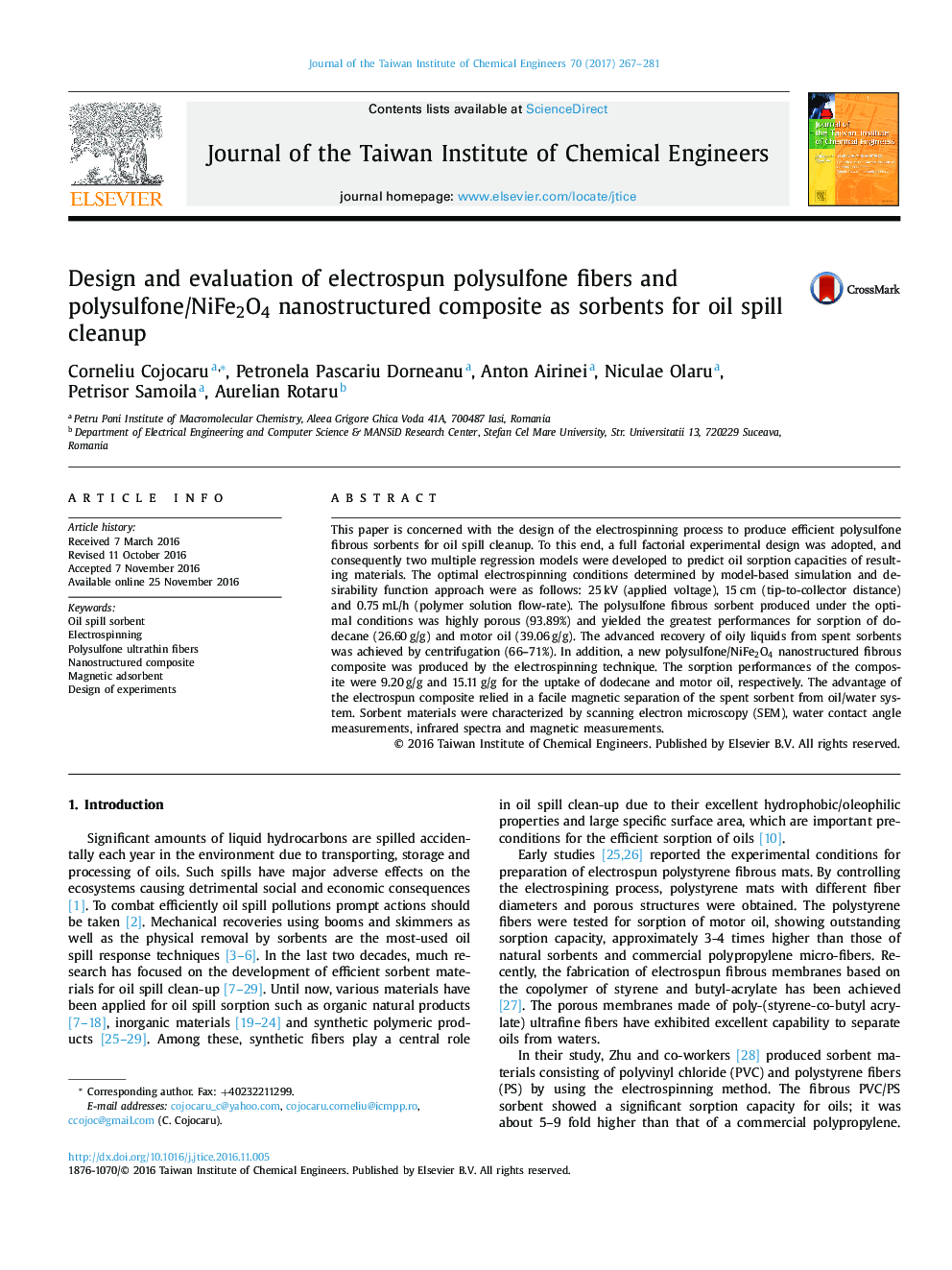| Article ID | Journal | Published Year | Pages | File Type |
|---|---|---|---|---|
| 4998908 | Journal of the Taiwan Institute of Chemical Engineers | 2017 | 15 Pages |
â¢Polysulfone fibrous sorbents were designed and produced by the electrospinning technique.â¢Sorbents were evaluated for sorption of oily liquids (dodecane and motor oil).â¢Multiple regression models were built to predict sorption performances.â¢A new polysulfone/NiFe2O4 nanostructured composite sorbent with magnetic property was developed.â¢Insights related to structure and sorption performance of materials were revealed.
This paper is concerned with the design of the electrospinning process to produce efficient polysulfone fibrous sorbents for oil spill cleanup. To this end, a full factorial experimental design was adopted, and consequently two multiple regression models were developed to predict oil sorption capacities of resulting materials. The optimal electrospinning conditions determined by model-based simulation and desirability function approach were as follows: 25Â kV (applied voltage), 15Â cm (tip-to-collector distance) and 0.75Â mL/h (polymer solution flow-rate). The polysulfone fibrous sorbent produced under the optimal conditions was highly porous (93.89%) and yielded the greatest performances for sorption of dodecane (26.60Â g/g) and motor oil (39.06Â g/g). The advanced recovery of oily liquids from spent sorbents was achieved by centrifugation (66-71%). In addition, a new polysulfone/NiFe2O4 nanostructured fibrous composite was produced by the electrospinning technique. The sorption performances of the composite were 9.20Â g/g and 15.11Â g/g for the uptake of dodecane and motor oil, respectively. The advantage of the electrospun composite relied in a facile magnetic separation of the spent sorbent from oil/water system. Sorbent materials were characterized by scanning electron microscopy (SEM), water contact angle measurements, infrared spectra and magnetic measurements.
Graphical abstractDownload high-res image (169KB)Download full-size image
